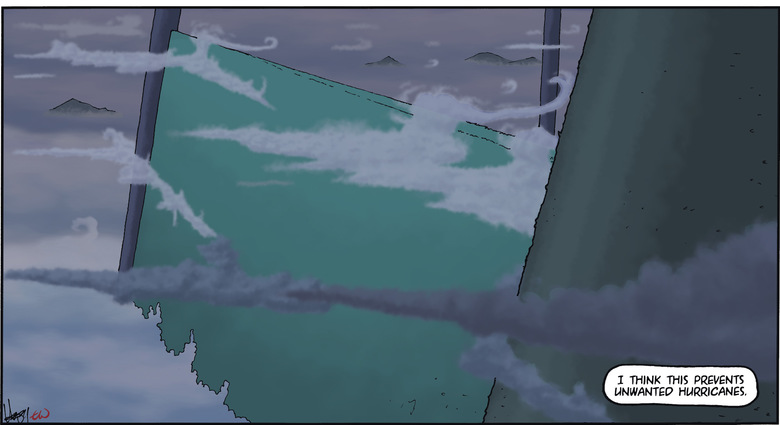Theoretically yes. But if you can build it, you can weather control it.
Weather is fundamentally the movement of air caused by temperature differentials in the atmosphere. In other words - some air is hotter than other air, and this causes the air to move around trying to find an equilibrium. All other weather effects are side effects of the big movements, mostly caused by things (namely water vapor) that the air has picked up while moving around.
Strong weather requires large temperature differentials, which in turn requires large amounts of air. There is no theoretical limit to the amount of air we can put in a space station - we just need enough materials to surround it and enough air to fill it. Water vapor is also easy to come by.
You also need temperature variance. That's easy enough to find - any station near a star is going to have one side that is naturally warmer than the other. Other temperature variations on Earth come from the materials of Earth's surface and the different ways that they retain heat (which is also incidentally affected by the presence or absence of water and water vapor). We can add different materials to our space station as well, and control where we put the water.
You don't even need that much volume to generate small amounts of weather. The Kennedy Space Center's Vehicle Assembly Building has 3,665,000 cubic meters and it can generate clouds on humid days. Not exactly a thunderstorm, but enough to cause significant damage to the planes being constructed there if their air conditioning ever breaks.

The problem is that extreme weather isn't very good for space stations. As anyone currently living in the Florida Panhandle or the Carolinas can tell you, extreme weather tends to have a negative effect on quality of life. So most space stations are going to go out of their way to avoid anything more powerful than a spring shower. And if you have the technology to build a can full of sky, you have the technology to control it.

An air conditioning system around the outside of your station can distribute the heat from the sun to keep the temperature nice and even. Baffles (like the one pictured above) can break up the movement of large quantities of air and prevent hurricanes from gathering momentum. When you get right down to it, a space station isn't all that different from a building built to a larger scale, and that just means you need a larger air conditioning unit.
Both images taken from Schlock Mercenary, a lovely space opera web comic. Book 14 (Broken Wind) is about our intrepid team of mercenaries discovering a station built by a race of aliens who had entirely too much time on their hands.




